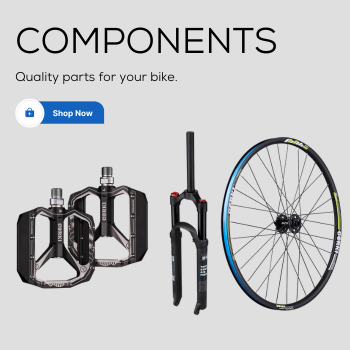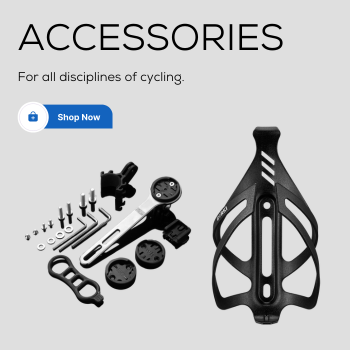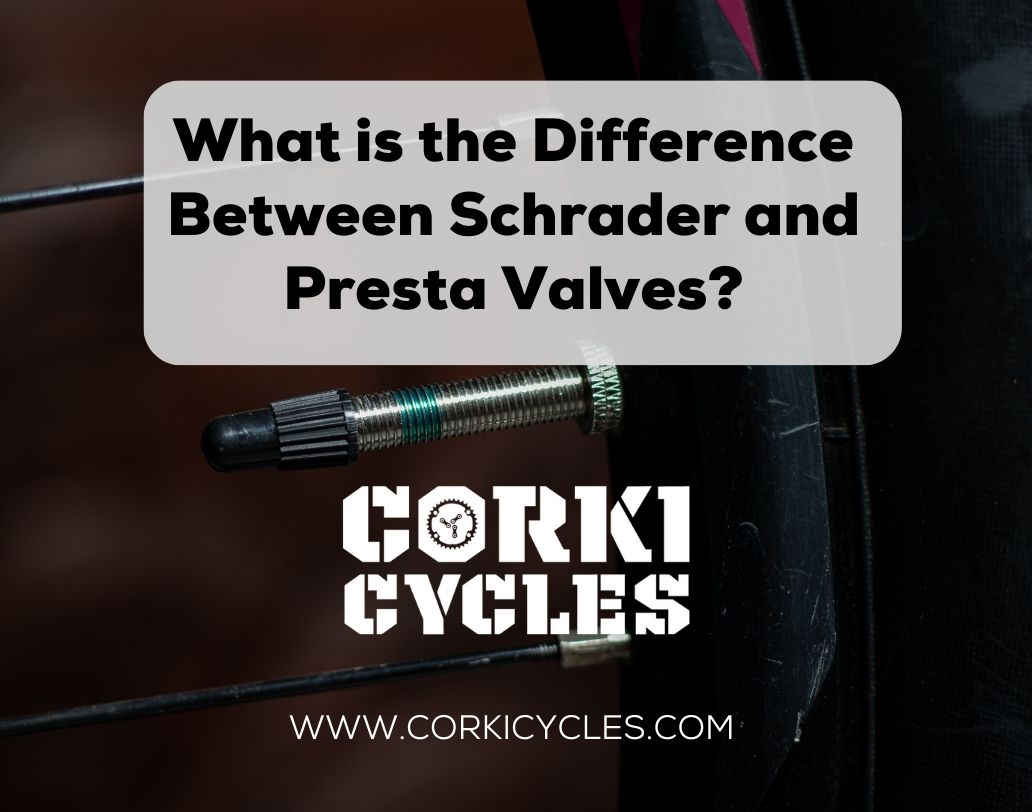
Hey there, fellow riders! Have you ever pumped up your bike tires and wondered why some valves look like they belong on a bike tire while others seem more high-tech and sleek?
This article will help you properly recognize the two most widely used bicycle inner tube valve systems. And tell you what is the difference between SV and FV. So, saddle up, pals, as we roll down the block and break down the remarkable differences between the Schrader Valve and the Presta valve. Let's make sure you're not just rolling but rolling with the right valves!
What is a Schrader Valve?
All right then, let's dive deep into the Schrader Valve (SV) universe! The Schrader valve is also called the American valve (AV). It is a type of valve commonly found in automotive and bicycle tires. Schrader valves are wider and have a more robust construction compared to Presta valves.

The Schrader Valve is usually wrapped in rubber, and the outer wall is threaded to accept a cap or pump head. It has a simple design with a spring-loaded pin in the center that controls airflow in and out. When it's time to inflate your tire, all you have to do is press down on that pin, and boom, air rushes in like a superhero coming to the rescue.
What is a Presta Valve?
Presta valves, also known as French valves, are commonly used in high-performance bicycles. These valves have a slim and stylish design, showcasing careful craftsmanship. Their distinctiveness lies in a threaded exterior crowned by a small but crucial locking nut at the tip of the valve.
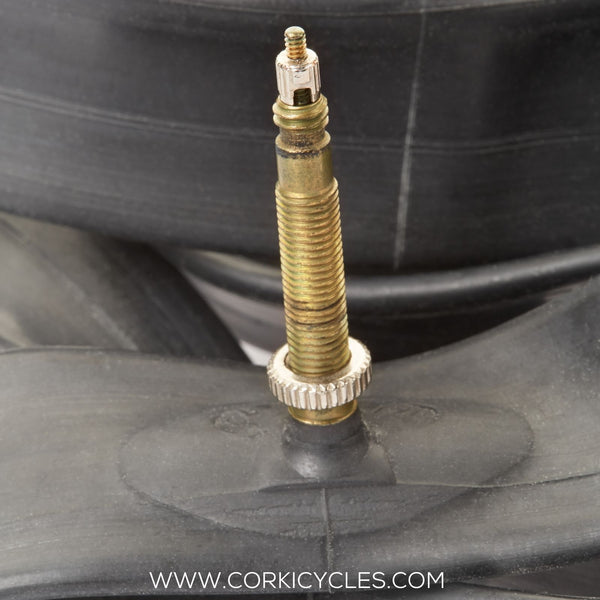
Presta valves are slim to fit narrow road bike rims. Beyond their aesthetic appeal, these valves are renowned for higher pressures. They offer a perfect mix of design, functionality, and performance. So, in the world of biking, Presta valves are a top choice.
Construction and Design Differences of SV and FV
Bike valves are an essential cycling component. It is found in high-pressure road bikes and the inner tubes of some mountain bicycles.
When we dissect the DNA of Schrader and Presta valves, we find some differences in design.
Presta valves stand out with their longer and slimmer profile. It resembles a refined and elongated shape. In contrast, the Schrader valve opts for a shorter and thicker appearance, giving it a more compact and robust look. It's like telling the difference between a sleek pencil and a sturdy marker. Each has its distinct shape, making identification a breeze.
Pros and Cons of Schrader Valves
When it comes to the world of tire valves, the Schrader valve stands tall as a reliable and familiar companion for many cyclists. Recognizable by its stout appearance and widespread use in various applications, Schrader valves have both their strengths and weaknesses. Let's take a closer look at the pros and cons of these tire inflation titans.
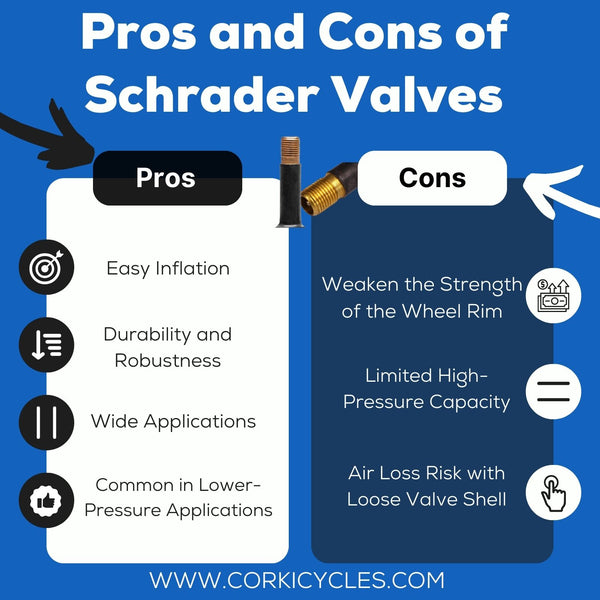
Pros:
Easy Inflation - One of the standout features of Schrader valves is their user-friendly design. Inflating a tire with a Schrader valve is a simple process. They have a spring-loaded pin and a rubber gasket that makes taking in air a breeze. All you need is a pump or pressure gauge that fits. Just press the pump onto the valve, and boom. Then, you're good to go—easy peasy, whether you're at a gas station or using a regular air pump. Perfect for riders of all levels!
Durability and Robustness - Schrader valves are like the superheroes of durability! They're famous for being super tough and strong, making them a top pick for lots of things. With their strong metal stem and tough rubber gasket, these valves can handle tough situations and last a really long time!
Wide Applications - One of the defining features of Schrader valves is their versatility. They're super versatile and can be used in all kinds of things. They're not picky—they work for cars, trucks, bikes, and even big machines. So, wherever you need to pump things up, these valves are ready to roll!
Common in Lower-Pressure Applications - Schrader valves are like the champs for handling lower pressures! They're famous for being used a lot in things like mountain bikes, kids' bikes, and some hybrid bikes. These valves are built tough and simple, making them perfect for everyday use. And because they're buddies with car tires, they're super popular for all kinds of vehicles that don't need crazy high pressures. So, if you want easy and durable, Schrader valves are the way to go!
Cons:
Weaken the Strength of the Wheel Rim - The valve hole in the rim can be a weak point because it has less material. Since Schrader valves need a bigger hole (8mm) compared to Presta valves (6mm), it can weaken the wheel, especially on narrower rims. For wider mountain bike rims, it's usually not a problem. But if your road bike wheels are less than 28mm wide, it's best to avoid Schrader valves to keep your wheels strong. Weak wheels can go wonky or break more easily when you hit a big bump.
Limited High-Pressure Capacity - While Schrader valves excel in lower-pressure applications, they may not be the optimal choice for scenarios requiring extremely high pressures. If you're a super speedy road cyclist aiming for crazy high pressures, they might not be your best bet.
Air Loss Risk with Loose Valve Shell - While Schrader valves offer numerous advantages, one notable disadvantage is their increased vulnerability to air loss when the valve shell is not securely tightened. The sealing mechanism of Schrader valves relies on a tight and proper fit of the valve shell. If the shell becomes loose due to wear, improper installation, or other factors, it can lead to more substantial air leakage. This susceptibility to air loss with a loose valve shell can pose challenges for users, necessitating regular maintenance and vigilance to prevent potential pressure fluctuations and ensure consistent tire performance. Users must be aware of this inherent disadvantage and take proactive measures to mitigate the risk of air loss associated with the tightness of the valve shell.
Pros and Cons of Presta Valves
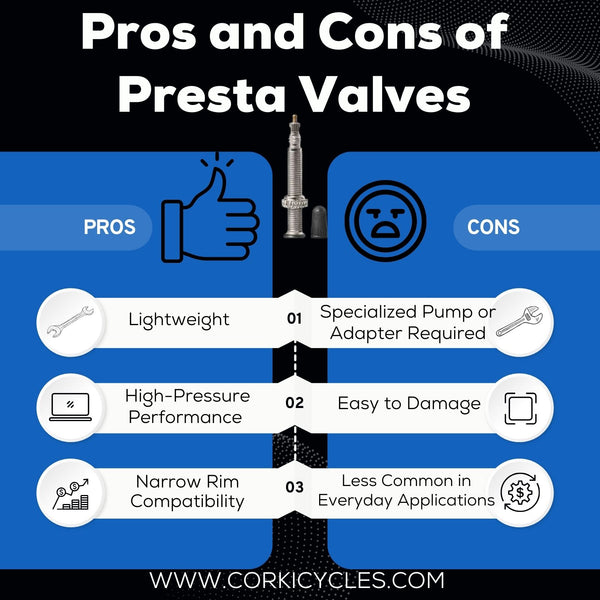
Pros:
Lightweight - The standout feature of Presta valves is their slim and lightweight design. This characteristic contributes to reduced weight on your bike. Although it can be marginal. Riders obsess about grams anywhere on the bike, but the rotational mass influences energy dynamics.
High-Pressure Performance - Presta valves shine in high-pressure scenarios, making them the darlings of road cyclists. Their ability to handle and maintain higher pressures is crucial for those who seek the optimal tire pressure for speed and performance on smooth road surfaces.
Narrow Rim Compatibility - Presta valves are designed with the narrower rims of road bikes in mind. This compatibility ensures a snug fit, catering to the specific requirements of high-performance cycling setups where precision matters.
Cons:
Specialized Pump or Adapter Required - While many bike pumps are now equipped for dual compatibility, some may still require a specialized Presta-compatible pump or an adapter. This extra step can be seen as a minor inconvenience, particularly if you're accustomed to the universal compatibility of Schrader valves.
Easy to Damage - For all the benefits, easy damage is the other disadvantage of Presta valves. Presta valve is longer and slimmer. The longer and more exposed nature of Presta valves can make them slightly more vulnerable to damage, especially in off-road or rugged conditions. Cyclists should exercise care to avoid bending or breaking the valve when handling their bikes or during transport.
Less Common in Everyday Applications - Unlike Schrader valves, which you can find at almost any gas station, Presta valves are less common in everyday applications. This means you might need to plan ahead or carry an adapter if you anticipate inflating your tires in locations without specialized equipment.
Conclusion
And there you have it, cyclists! You have known all the differences between the Schrader Valve (SV) and the Presta Valve (FV). Schrader Valves present a robust and reliable companion, recognized for its widespread use in many vehicles. On the other side, Presta Valves are the preferred choice for those who want high-pressure prowess.
As you ponder the SV-FV dilemma, remember that each valve type has its advantages and drawbacks. That depends on how patient and prepared a rider you are.
So, fellow riders, saddle up with the right valves and hit the road. If you have questions or want to share your biking tales, please leave them below. Happy riding!

